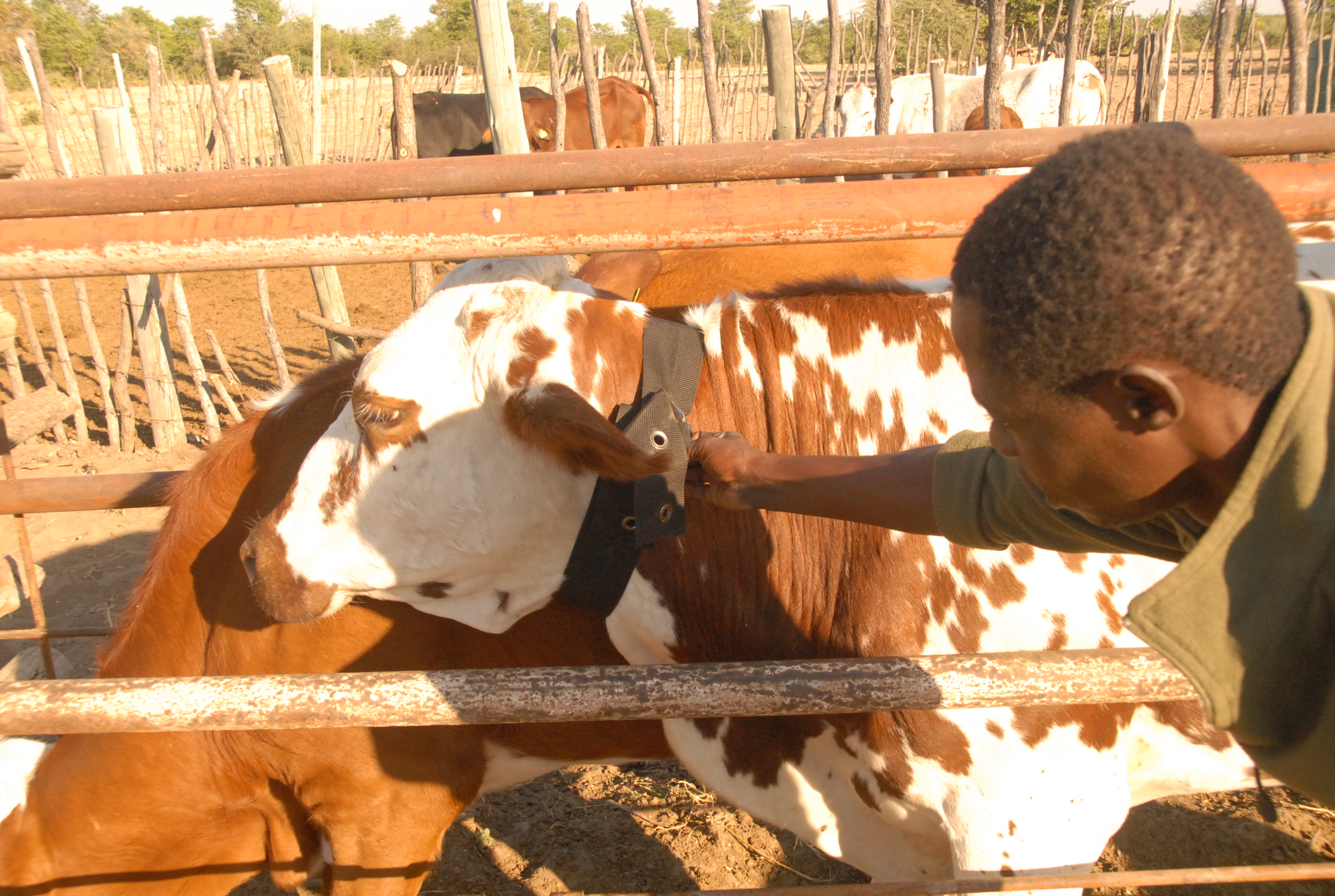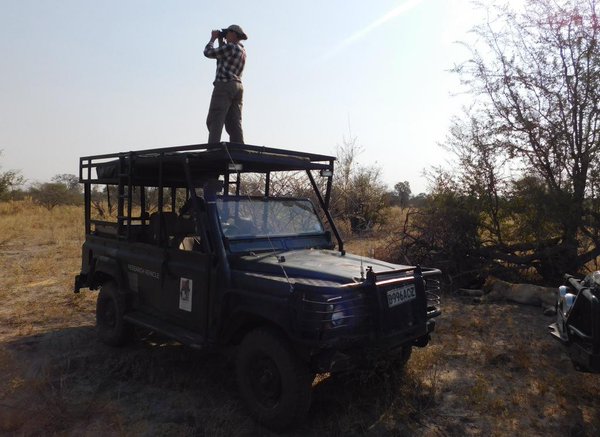Methods
Summary
Eye-patterns will be painted onto the hides of cows using a hand-made foam stamp. Acrylic paints have been tested for durability (3-4weeks) and irritation (none) during a short trial. Painting will be conducted as the cows leave the kraal (overnight enclosure) in the morning, and will be reapplied every three-weeks. Half of the cows in the herd will be painted and the other half will be processed in the same way but stamped with a paint-free stamp.
 Painting the cows
Painting the cows
Cattle will be fitted with GPS-collars as they are released through the cattle crush in the morning at the beginning of the study. The GPS units within these collars can be removed and replaced when paint is reapplied, and before the batteries become low and require charging. Half of the GPS-units (10) will be fitted to painted cows, while half (10) will be fitted to non-painted cows.
 Fitting and checking a cow GPS-collar
Fitting and checking a cow GPS-collar
Lions will be located with a professional spoor tracker / research assistant, or at the location of a livestock predation event.
![]() Spoor-tracking conflict lions with Department of Wildlife and National Parks trackers
Spoor-tracking conflict lions with Department of Wildlife and National Parks trackers
The lion will be free-darted by a local Botswana-registered wildlife veterinarian using approved protocols and drug combinations. When darting a lion, at least two vehicles are used to herd away the other pride members if necessary, and to provide a platform for look-outs to be stationed. These people scan the surroundings while the lion is being worked on.
 Scanning for incoming lions while vet fits collar to immobilized lion
Scanning for incoming lions while vet fits collar to immobilized lion
Only adult individuals will be fitted with collars, and will include a timed drop-off unit to ensure that the collars are removed in the venet that the lion dispersers from the area during the study. The Botswana Predator Conservation Trust has approximately 10-years experience in collaring lions with the local vet.
Challenges
One challenge may lie in convincing the farmer to continue the experiment if cows are predated. We will minimise this risk by assisting the farmer to collect valuable evidence (carcass, photos, etc) for government compensation claims, and by encouring him to insure his livestock against predation within the Botswana Predator Conservation Trust's Shorobe Livestock Insurance scheme. As part of those processes, farmers will be compensated in for full for the loss of their stock during the course of the experiment.
Pre Analysis Plan
All analyses will be conducted in the R statistical platform. The most basic result will be a paired comparison of predation of the two groups (binomial test of proportions).
Habitat selection and activity patterns of lions and cows will be conducted using standard spatial analysis packages in R. A new spatial analysis package T-LoCoH will be used to develop a landscape of risk for cattle, by identifying areas of repeated and prolonged utiisation at different times, and in relation to the same for lions.
We have already developed and used algorithms to process large quantities of GPS-location data and automatically extract encounters between individuals (lions and cattle). This will allow other variables such as herd size, distance to kraal and other variables to be included in mixed models of predation.
Protocols
This project has not yet shared any protocols.